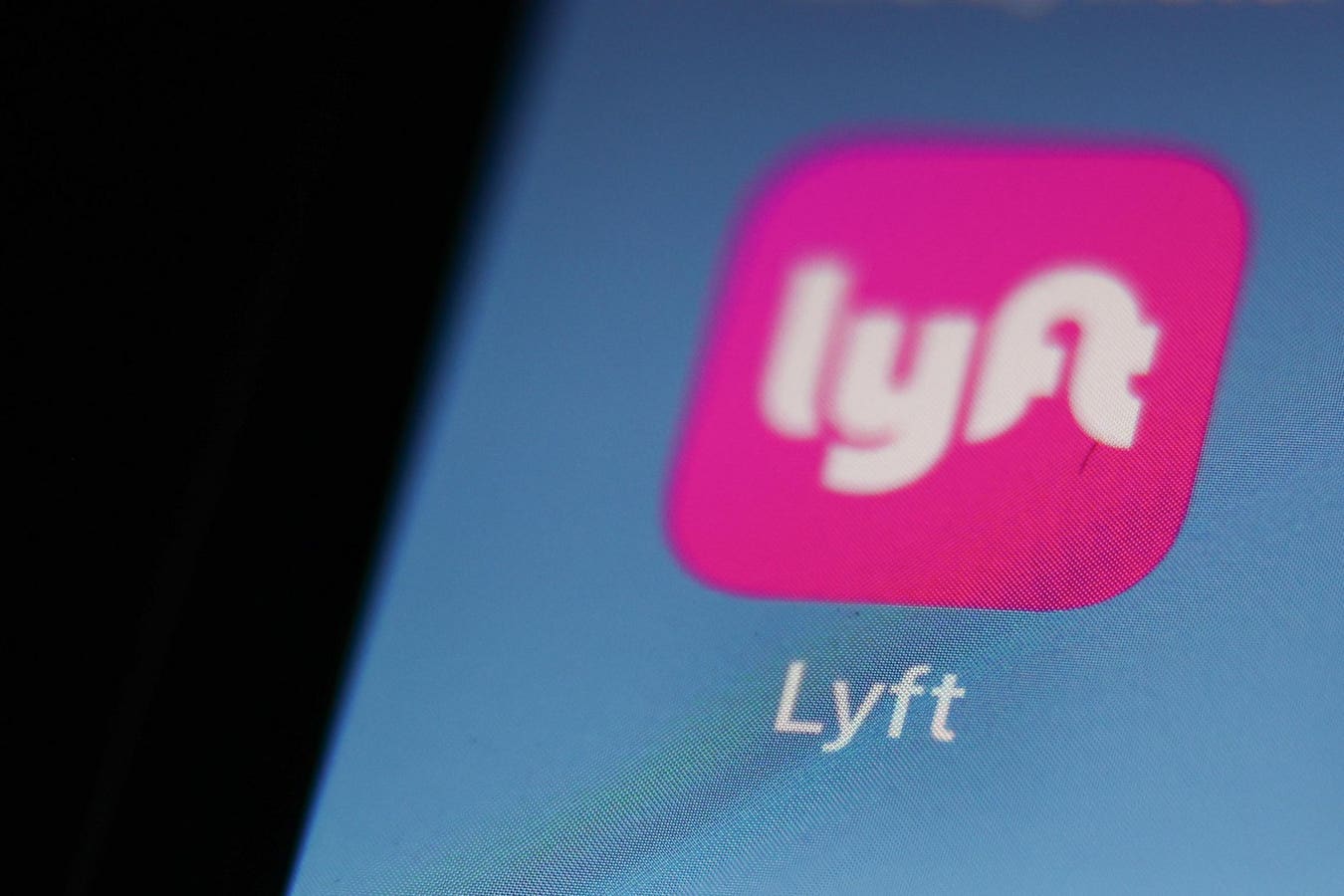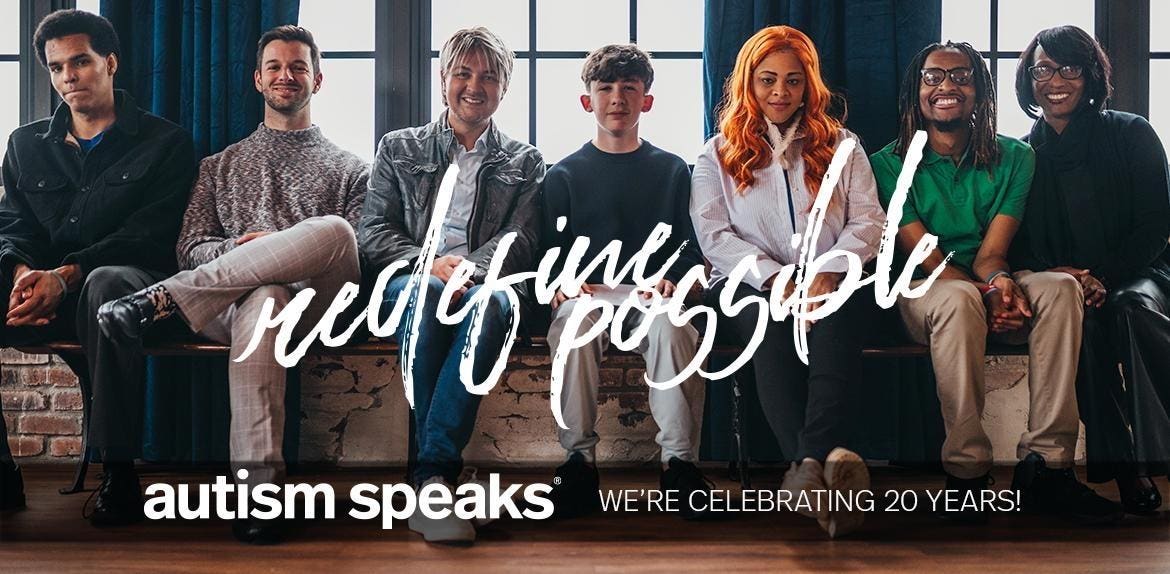Diversity and Inclusion (DEIA)
Why Gender Equity in Leadership Matters for a Stronger Economy

The Case for Gender Equity in Leadership
Gender equity in leadership is a critical component of a thriving economy. Despite making up nearly half of the global workforce, women are underrepresented in leadership positions, holding only 22% of senior executive positions and 4% of CEO roles globally. This disparity not only has a negative impact on women’s careers but also hampers economic growth and development.
Benefits of Gender Equity in Leadership
Increased Diversity of Thought
When women are represented in leadership positions, they bring unique perspectives and ideas to the table. This diversity of thought leads to more innovative and effective solutions, ultimately driving business growth and success.
Improved Decision Making
Research has shown that teams with a higher percentage of women make more informed and strategic decisions. This is because women tend to approach problems from a more holistic perspective, considering both the short-term and long-term implications.
Better Representation and Inclusion
When women are represented in leadership, it sends a powerful message to women everywhere that they too can hold leadership positions. This increases feelings of inclusion and belonging, leading to higher levels of job satisfaction and reduced turnover rates.
Economic Growth and Development
A study by the McKinsey Global Institute found that if women were represented equally in leadership positions, global GDP could increase by up to 26%. This is because women are more likely to invest in education, healthcare, and other areas that drive economic growth.
Challenges to Achieving Gender Equity in Leadership
Biases and Stereotypes
Despite efforts to create a more inclusive environment, biases and stereotypes still exist. Women often face unconscious bias, being viewed as less capable or less suitable for leadership positions.
Lack of Role Models and Mentorship
Many women lack access to role models and mentors who can provide guidance and support. This can lead to feelings of isolation and self-doubt, making it more difficult for women to take on leadership roles.
Inadequate Policies and Practices
Many organizations lack policies and practices that support women’s career advancement. This includes inadequate parental leave policies, limited flexible work arrangements, and lack of support for work-life balance.
Solutions to Achieve Gender Equity in Leadership
Implement Diversity and Inclusion Initiatives
Organizations should implement diversity and inclusion initiatives that promote equality and fairness. This includes unconscious bias training, mentorship programs, and opportunities for professional development.
Provide Support for Women’s Career Advancement
Organizations should provide support for women’s career advancement, including flexible work arrangements, parental leave policies, and mentorship programs.
Hold Leaders Accountable
Leaders should be held accountable for promoting gender equity in leadership. This includes setting targets and tracking progress, providing training and resources, and creating a culture of inclusion.
Conclusion
Gender equity in leadership is a critical component of a thriving economy. By increasing diversity of thought, improving decision making, and promoting representation and inclusion, organizations can drive business growth and success. To achieve gender equity, organizations must address biases and stereotypes, provide support for women’s career advancement, and hold leaders accountable. By working together, we can create a more inclusive and equitable leadership landscape.
FAQs
What is gender equity in leadership?
Gender equity in leadership refers to the equal representation of men and women in leadership positions, ensuring that both genders have equal opportunities for career advancement and development.
Why is gender equity in leadership important?
Gender equity in leadership is important because it promotes diversity of thought, improves decision making, and promotes representation and inclusion. It also has a positive impact on the economy, as studies have shown that equal representation of men and women in leadership positions can lead to increased GDP and economic growth.
What are some challenges to achieving gender equity in leadership?
Some challenges to achieving gender equity in leadership include biases and stereotypes, lack of role models and mentorship, and inadequate policies and practices. Organizations must address these challenges to promote gender equity in leadership.
What can organizations do to achieve gender equity in leadership?
Organizations can achieve gender equity in leadership by implementing diversity and inclusion initiatives, providing support for women’s career advancement, and holding leaders accountable. They should also track progress and set targets to ensure equal representation of men and women in leadership positions.
Diversity and Inclusion (DEIA)
The Silence After the Spotlight: What Happened to Health Equity?

The last five years ushered in a wave of performative urgency across the healthcare industry — a tidal surge of press releases, C-suite appointments and purpose-driven campaigns declaring a new era of commitment to diversity, equity and inclusion. For many who have spent their careers in the trenches of health disparities work, it felt like a long-awaited reckoning — a rare window to push real, systemic change.
The Reality of Health Equity Efforts
But now, with the political winds shifting and legal uncertainties clouding the DEI landscape, many of the loudest voices have gone eerily quiet. Initiatives are quietly being sunset. Equity teams are being dissolved. Former champions have disappeared from panels and podiums. What once appeared to be a movement now feels more like a marketing cycle that expired.
Was Health Equity Just a Fad?
It’s fair to ask: was health equity just the latest healthcare “hustle”? Another badge for visibility? A convenient way to be on trend? Many of the early warning signs were there: initiatives announced without infrastructure, funding that never materialized and leadership roles created without authority or resources. DEI professionals were invited into rooms — but too often not given a voice. They were handed lofty titles, yet asked to color inside predetermined lines. Meanwhile, their organizations basked in applause for appearances, not results.
What Happened to Health Equity?
What happened? The generous interpretation is that legal and political pressures forced a change in strategy. But even that framing lets too many leaders off the hook. Because you can alter rhetoric without abandoning values. You can evolve your messaging without walking away from your mission. The truth is more uncomfortable: some organizations weren’t ever serious about this work to begin with. They were renting values, not owning them.
The Impact on Health Equity Leaders
Let’s not sugarcoat this moment. Many health equity leaders feel betrayed. They feel used. And they’re right to feel that way. Because what’s at stake isn’t just credibility — it’s people’s lives. Vulnerable communities that experience the harshest disparities in health outcomes don’t have the luxury of waiting for politics to stabilize or organizational priorities to realign. So, where do we go from here?
Moving Forward
1. Stay the Course—Even If the Spotlight Is Gone
Now is not the time to back down. In fact, real leaders will show themselves in what they do now, when the noise has died down and the easy accolades are gone. Organizations that meant what they said should continue to drive toward health equity goals however they are described — if necessary, under new language or frameworks. Call it quality. Call it population health. Call it patient-centeredness. But don’t stop doing the work just because the branding changed. Leadership is not about doing what’s popular — it’s about doing what’s right, even when it’s uncomfortable.
2. Demand Accountability—for Past Commitments and Present Silence
We cannot normalize the kind of strategic amnesia now unfolding across healthcare. When organizations made bold pronouncements in 2020, they weren’t just symbolic gestures — they were public commitments. And commitments matter. It’s time to ask the uncomfortable questions: What happened to your health equity agenda? Why are your equity leaders gone? Where did the funding go?
3. Integrate Equity into the Broader Healthcare Fix
The biggest opportunity we’ve missed is also our most urgent one: integrating the health equity conversation into broader healthcare reform. The same systemic issues — misaligned incentives, fragmented care, access barriers, clinician burnout — that fail everyone fail the most vulnerable people first and worst. Equity isn’t a separate issue. It’s the canary in the coal mine. Fixing equity and fixing healthcare are not competing goals — they are convergent ones. If we design a system that works for the most complex, marginalized patients, we design a system that is better for everyone.
Conclusion
So, yes, some of what we saw over the past few years was performative. Some of it was opportunistic. Some of it was a hustle. But it wasn’t for everyone, and we can’t afford to let our cynicism dictate the future. Because while some leaders may be done with health equity, health equity isn’t done with us. The disparities are still there. The patients are still suffering. The trust is still broken. And our obligation remains — especially if we want to call ourselves a just and compassionate healthcare system. Real leadership in this moment isn’t loud. It’s consistent. It’s not in the spotlight. It’s in the follow-through. And it doesn’t waver when the applause and recognition stops.
FAQs
- Q: What is health equity?
- A: Health equity refers to the principle of ensuring that all individuals have an equal opportunity to achieve optimal health, regardless of their background, socioeconomic status, or demographic characteristics.
- Q: Why did health equity initiatives seem to fade away?
- A: Health equity initiatives appeared to fade away due to a combination of factors, including shifting political winds, legal uncertainties, and a lack of genuine commitment from some organizations.
- Q: How can we move forward with health equity efforts?
- A: Moving forward requires staying committed to health equity goals, demanding accountability from organizations, and integrating equity into broader healthcare reform efforts.
- Q: Why is integrating equity into healthcare reform important?
- A: Integrating equity into healthcare reform is crucial because it addresses the systemic issues that disproportionately affect vulnerable communities, ultimately leading to a better healthcare system for everyone.
Diversity and Inclusion (DEIA)
Is Good Design Only for Adults?

Introduction to Lyft Silver
Rideshare company Lyft announced a new service aimed at older adults called Lyft Silver. The company says it’s about giving seniors "the gift of independence, without the weight of worry." The service features larger text, simpler menus and prioritizes matching riders with vehicles that are easier to enter and exit. It even offers live human support when needed.
According to Lyft’s announcement, they’ve "poured their hearts" into this design, thinking about "those we cherish most." They’ve worked with experts on aging to create what they call a "groundbreaking feature." It all sounds thoughtful and well-intentioned. But when I look at the list of features, I can’t help but wonder: Why are these improvements only available to seniors? Wouldn’t many of them be just as useful for riders of any age?
When Good Design Gets Age-Restricted
Let’s examine what Lyft Silver actually offers. According to Fast Company, the service uses a font that’s 1.4 times larger than the standard app. It has a cleaner, simpler interface. It connects users with rides that are easier to get in and out of. (Apparently, Lyft’s data showed seniors are twice as likely to cancel when matched with pickup trucks.) And it offers access to phone support with real human beings.
Are any of these features that only older adults would benefit from? Wouldn’t many people of all ages struggle to read tiny app text on a sun-drenched phone screen while standing on a street corner? Who hasn’t been frustrated when an app update buries an essential function three menus deep? Might other users prefer to be matched with vehicles that are easier to enter? And who wouldn’t want to connect with a live human when things go south?
The Paradox Of Specialized Design
Design legend and usability expert Don Norman puts it perfectly: "Designing for people with disabilities almost always leads to products that work better for everyone." The irony is that making these features "special" actually reinforces a problematic mindset about design. I don’t think I’ve ever quoted former Microsoft CEO Steve Ballmer about anything. But he was absolutely right when he stated, “Accessible design is good design.”
When companies create separate, specialized interfaces for different user groups, they’re often implicitly acknowledging that their main product isn’t as usable as it could be. Instead of fixing the core experience, they create an alternate path that often gets less attention and fewer updates over time. There’s also something mildly patronizing about age-segregated design. Only 5.6% of Lyft’s riders are over 65, according to Fast Company. Today, that age bracket makes up 18% of the U.S. population. Lyft’s low senior usage rate likely revealed a usability problem, not a lack of need or interest among older adults.
The Business Case For Universal Design
From a business perspective, making your product more usable for everyone isn’t just the right thing to do, it’s smart strategy. When curb cuts were mandated for wheelchair accessibility, they ended up benefiting parents with strollers, travelers with luggage, delivery workers, and countless others. Lyft’s own data points to the business upside. Older adults are 57% more likely to miss their rides, Fast Company reported. That’s lost revenue, not to mention frustrated drivers and riders. By making the service more accessible, Lyft stands to increase successful rides across all demographics.
Moving Beyond Age-Restricted Design
What would a truly inclusive Lyft app look like? Perhaps it would offer customizable font sizes and contrast options for everyone. It might let any user select vehicle preferences based on ease of entry. And imagine offering a "Get Help" button for all users, not just those over a certain age. Design that accommodates diverse needs doesn’t have to mean designing for the lowest common denominator or sacrificing aesthetic appeal. In fact, as Don Norman argues, there’s no reason assistive devices can’t be beautiful and elegant. The same applies to digital apps.
Lyft Silver for All?
Lyft deserves credit for identifying gaps in their service for older users. But the real innovation would be recognizing that the improvements they’ve created for Lyft Silver shouldn’t be age-restricted at all. When good design gets labeled as a specialized option for a particular demographic, we all lose out. Isn’t it time we stopped treating ease of use as a special feature?
Conclusion
In conclusion, while Lyft’s introduction of Lyft Silver is a step in the right direction, it raises important questions about the nature of design and accessibility. By restricting these features to seniors, Lyft may be reinforcing a problematic mindset about design. Instead, the company should consider making these improvements available to all users, regardless of age. This approach would not only benefit seniors but also enhance the overall user experience for everyone.
FAQs
Q: What is Lyft Silver?
A: Lyft Silver is a new service offered by Lyft that is designed for older adults, featuring larger text, simpler menus, and easier-to-enter vehicles.
Q: Why is Lyft Silver only available to seniors?
A: According to Lyft, the service is designed to give seniors "the gift of independence, without the weight of worry." However, many of the features may be beneficial to users of all ages.
Q: What are some potential drawbacks of age-restricted design?
A: Age-restricted design can reinforce a problematic mindset about design, imply that the main product is not usable, and create a separate, potentially less-maintained path for certain users.
Q: What are the benefits of universal design?
A: Universal design can benefit all users, regardless of age or ability, and can also be a smart business strategy, increasing accessibility and usability for a wider range of users.
Diversity and Inclusion (DEIA)
Autism Speaks Reimagined: From Controversy to Inclusion and Lifespan Support

When Autism Speaks was founded in 2005, the autism landscape looked drastically different. Public understanding was limited. Screening options were scarce. Insurance rarely covered behavioral therapies. And families who received a diagnosis were often handed a pamphlet and sent on their way, forced to become experts overnight.
That experience was personal for Keith Wargo, the current President and CEO of Autism Speaks, whose own son was diagnosed more than two decades ago. “When he was diagnosed, we were given a diagnosis and little else. No roadmap. No coordinated support system,” Wargo explained. Like many families at the time, his support came from informal parent networks rather than institutional guidance. “Our shared journey, grounded in the experiences of our children and as parents, is what originally drew me to this work—and is what continues to keep the voices of the autism community at the center of all we do at Autism Speaks.” That hasn’t always been the case.
The Criticism of Autism Speaks And The Lessons Learned
Over the years, Autism Speaks has faced significant criticism—most notably from self-advocates—regarding its early focus on curing autism, portraying autistic individuals through a lens of fear, and failing to include autistic voices in leadership and decision-making.
But Wargo says that the feedback wasn’t ignored—it was transformative. “This is not a PR effort—it’s fundamental to how we operate and make decisions. If we’re serious about impact, we need to build solutions with, not just for, the people we’re working to support.”
This perspective has catalyzed a shift in the organization’s core mission—from one focused on early diagnosis and awareness to one that addresses support across the entire lifespan. As Wargo notes, “Autism is a lifelong condition, yet the support available to autistic adults is lacking.”
The data backs him up. According to the CDC, autistic individuals face a life expectancy of just 54 years, and only one in five people with disabilities—including autism—is employed. Autistic people are twice as likely to experience homelessness, and one in four families raising a child with autism faces food or housing insecurity.
Focusing On The Core Areas Where Autistic People Face Disparities
Autism Speaks is now focusing on three core areas where these disparities are most acute: healthcare, employment, and housing. And within each of those domains, the organization is elevating the voices of autistic individuals to help drive its agenda forward.
Dr. Andy Shih, Chief Science Officer at Autism Speaks, believes that meaningful progress for autistic adults will require long-term scientific investment. “We urgently need longitudinal studies that follow autistic people across their lifetimes,” he said, noting the absence of research on how autism intersects with chronic health conditions like cardiovascular disease, diabetes, and dementia. As the autistic population ages, Shih says, there’s a growing need to understand better how these conditions impact quality of life and life expectancy.
Despite recent advancements in early screening and evidence-based interventions, research on adulthood and aging in autism lags significantly behind. According to the 2021 National Autism Indicators Report, autistic adults frequently encounter healthcare systems that are ill-equipped to meet their needs, especially when it comes to coordinating care for co-occurring conditions. “We need to ensure that these studies are inclusive,” Dr. Shih adds, “especially of those with intellectual disabilities and individuals from underrepresented communities so that the results can drive equitable outcomes for everyone.”
True Equity And Representation of Autistic People
That emphasis on equity and representation is echoed by Eileen Lamb, Director of Social Media and Influencer Marketing at Autism Speaks—and an autistic self-advocate herself. Lamb is also the mother of two autistic children, including her eldest son, Charlie, who is nonverbal and has profound autism. “To me, true acceptance means including everybody—it doesn’t stop at level 1 autism or when it’s hard,” she said. For Lamb, meaningful inclusion means building systems that support both the gifted and the differently abled.
“Charlie has no sense of danger, which manifests in different ways like running in front of cars and eating non-edible items,” she shared. “He requires extensive support and will continue to as he gets older, but his life still has great value.” Through her dual lens as a parent and self-advocate, Lamb is helping guide Autism Speaks’ initiatives in expanding mental and physical healthcare resources, educating employers on inclusive hiring practices, and advocating for technologies that foster communication and independence.
Lamb also recognizes the importance of caregiver voices, particularly when those being served are nonverbal. “We need to invest in services and supports that allow all autistic people to be integrated into society—not just those who are able to advocate for themselves.”
Learning From The Past
Autism Speaks has not escaped its past—but its current leaders seem determined to learn from it. Its new strategic focus prioritizes autistic inclusion, not only in theory but in practice, with goals aimed at improving quality of life and extending opportunity across the spectrum. From leadership changes to investments in lifespan research and grassroots advocacy, the organization is working to rebuild trust where it once faced skepticism.
As Wargo puts it, “We can’t allow progress in early childhood to be where the story ends. Our responsibility is to make sure that every autistic person, regardless of their support needs, has the opportunity to live a full and supported life—at every age.”
That future, according to Autism Speaks, will be built not on speaking louder—but on listening better.
Conclusion
The journey of Autism Speaks reflects the broader evolution in understanding and addressing autism. From a starting point of limited understanding and scarce resources, there has been significant progress in diagnosis, awareness, and support. However, the organization’s history also highlights the importance of listening to and including the voices of autistic individuals and their families. As the focus shifts towards lifelong support and addressing disparities in healthcare, employment, and housing, the emphasis on equity, representation, and inclusion becomes paramount.
FAQs
- Q: What was the state of autism awareness and support when Autism Speaks was founded in 2005?
A: Public understanding was limited, screening options were scarce, insurance rarely covered behavioral therapies, and families often received little guidance after a diagnosis. - Q: What criticisms has Autism Speaks faced, and how has it responded?
A: Autism Speaks faced criticism for its early focus on curing autism, portraying autistic individuals negatively, and lacking autistic voices in leadership. It has responded by shifting its focus towards support across the lifespan and emphasizing autistic inclusion in decision-making. - Q: What are the core areas where Autism Speaks is now focusing its efforts?
A: The organization is focusing on healthcare, employment, and housing, with an emphasis on elevating autistic voices to drive its agenda forward. - Q: Why is longitudinal research important for autistic adults?
A: Longitudinal research is crucial for understanding how autism intersects with chronic health conditions across lifetimes and for developing appropriate support systems. - Q: What does true acceptance and inclusion mean for autistic individuals?
A: True acceptance means including everybody, regardless of the level of autism or support needs, and building systems that support both the gifted and the differently abled.
-

 Career Advice5 months ago
Career Advice5 months agoInterview with Dr. Kristy K. Taylor, WORxK Global News Magazine Founder
-

 Diversity and Inclusion (DEIA)5 months ago
Diversity and Inclusion (DEIA)5 months agoSarah Herrlinger Talks AirPods Pro Hearing Aid
-

 Career Advice5 months ago
Career Advice5 months agoNetWork Your Way to Success: Top Tips for Maximizing Your Professional Network
-

 Changemaker Interviews4 months ago
Changemaker Interviews4 months agoUnlocking Human Potential: Kim Groshek’s Journey to Transforming Leadership and Stress Resilience
-

 Diversity and Inclusion (DEIA)5 months ago
Diversity and Inclusion (DEIA)5 months agoThe Power of Belonging: Why Feeling Accepted Matters in the Workplace
-

 Global Trends and Politics5 months ago
Global Trends and Politics5 months agoHealth-care stocks fall after Warren PBM bill, Brian Thompson shooting
-

 Global Trends and Politics5 months ago
Global Trends and Politics5 months agoUnionization Goes Mainstream: How the Changing Workforce is Driving Demand for Collective Bargaining
-

 Training and Development5 months ago
Training and Development5 months agoLevel Up: How Upskilling Can Help You Stay Ahead of the Curve in a Rapidly Changing Industry









